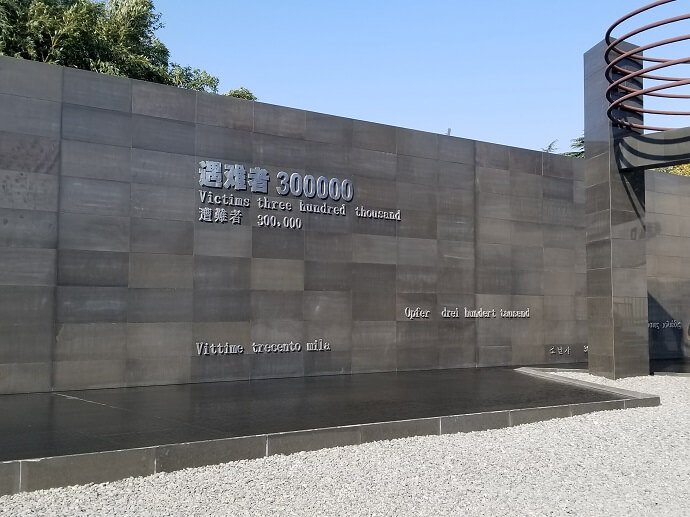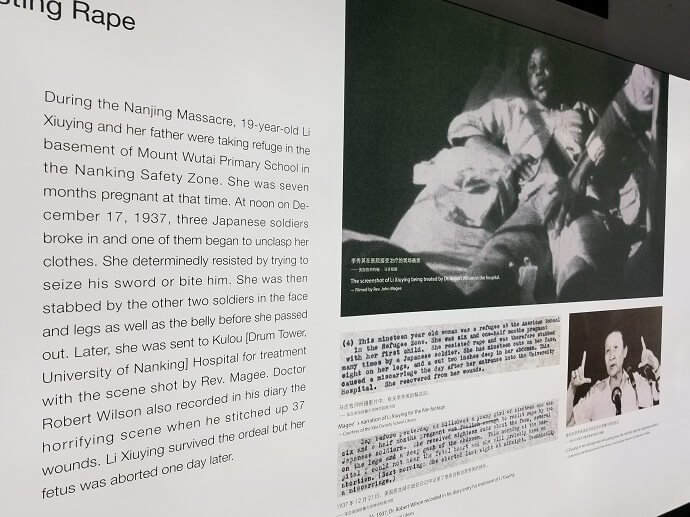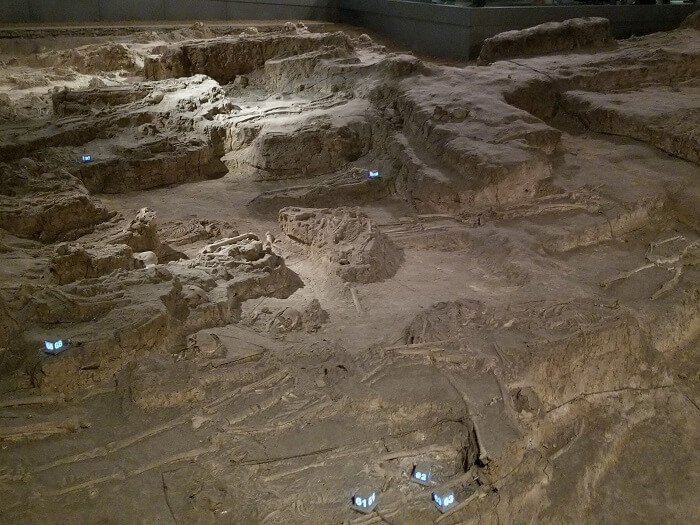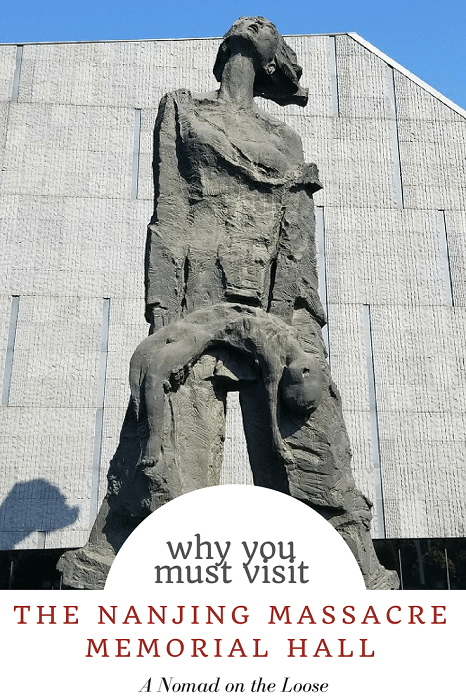This post may contain affiliate links. If you click on one and purchase something, I may receive an affiliate commission — at no extra cost to you.
While Beijing may hold the historical treasures of China’s millennia-long history and Shanghai may be its global hub and largest city, it is Nanjing that holds the core of what China is today. Unless you or your relatives have lived in China in the past century or extensively studied the history of this period, you can’t truly understand modern China as it is without visiting Nanjing. And the number one spot to visit is the Nanjing Massacre Memorial Hall.
Nanjing, literally “southern capital,” was once the capital of China during numerous dynasties. Its counterpart, Beijing, literally means “northern capital.” Nanjing also served as the capital of the Republic of China during the Chinese Civil War before its leaders fled to Taiwan. Today, Nanjing is the capital of Jiangsu province and a quick 90-minute train ride from Shanghai.
But if you ask anyone with knowledge of modern Chinese history to name one thing associated with Nanjing, you’ll most likely hear them say the Nanking Massacre, or Rape of Nanking.
*Trigger warning: there’s no way to adequately talk about Nanjing, the massacre, or the memorial without discussing graphic violence and rape. Where there are photos, I’ve tried to keep them to the less graphic ones. The memorial includes way more graphic photographs.
The Nanking Massacre
Nanjing used to be romanized as “Nanking” and “Nankin,” which is why historical references to what happened in 1937-1938 are typically written as “the Nanking Massacre” and the “Rape of Nanking.”
Technically this occurred during the Second Sino-Japanese War, though many will discuss the Rape of Nanking as an event of World War II. Like German aggression in Europe, Japanese aggression in Asia was a precursor to the historical start of the global war in 1939.
Nanjing fell to Japanese forces on December 13, 1937, and over the next six weeks, Japanese soldiers murdered 300,000 Chinese civilians and disarmed soldiers, and raped, looted, burned, and tortured with abandon.

Japanese officers had killing contests to see how fast they could kill people with a sword. Japanese soldiers raped, sodomized, and mutilated women and girls; many of the victims were gang-raped and then killed and mutilated. Pregnant women were special targets, often raped and then bayoneted to cut the fetuses out of them; new mothers often saw their babies bayoneted to death before being raped and killed themselves. Approximately 20,000 children and adults were raped during this time. POWs were summarily executed outside the parameters of international law and agreements.

The Nanjing Massacre Memorial Hall
Today, the Nanjing Massacre Memorial Hall stands as a remembrance of the victims of this atrocity. (The full name of the museum is Memorial Hall of the Victims in Nanjing Massacre by Japanese Invaders.)
Opened in 1985, the museum is built near a site called the “pit of ten thousand corpses.” Historians say approximately 12,000 bodies were dumped in this pit, and one of the exhibition halls in the museum actually includes skeletal remains excavated from this pit.

The memorial is free to enter and starts with outdoor installations depicting the tragedies and atrocities of the Nanjing Massacre through sculptures and poems. Once inside, the museum does a good job of setting the events in historical context and showing what was occurring on the Western front as well as elsewhere in Asia. But as you get deeper into the museum, so also you get deeper into the atrocities committed by the Japanese during the Rape of Nanking and deeper into the evil potential of humanity.
It’s difficult not to swallow hard and shed some tears as you read about what happened. Many of the photos, videos, and testimonies are from survivors as well as Westerners in Nanjing who stayed behind to protect Chinese civilians as part of the Nanking Safety Zone. (Ironically, the head of this committee, John Rabe, was a staunch Nazi, and even he appealed to the Japanese government to stop their army’s behavior. When he was denounced as a Nazi after the war and fell into extreme poverty, the residents of Nanjing raised money and sent food to help feed his family as gratitude for his help during the massacre.)

The museum also includes a section on Chinese-Japanese reconciliation, focused on moving forward and finding peace. It includes statements from the few Japanese soldiers who were at the massacre and who have since asked for forgiveness and worked toward reconciliation.
Why visiting the Nanjing Massacre Memorial is crucial to understanding modern China
It is said today that few people who live in Nanjing are truly from Nanjing because so many of the city’s residents died in the massacre and the city was so destroyed and haunted that those who survived left. What has stayed, however, is a sense of sorrow and anger that has not dissipated.
To know what happened during the Nanking Massacre is to understand the extent of Japanese atrocities during their years of aggression before and during World War II. (One of the other extremes is Unit 731, the human experiments lab where the Japanese conducted biological and chemical warfare experiments on Chinese people.) It is a history that most of us who grow up in the West never learn in school (most of us only hear of Pearl Harbor and the Bataan Death March).
But that is just one part of the story. The reason the Rape of Nanking continues to play a huge role in modern China is that there are still prominent Japanese historians and politicians who deny it happened or actively try to minimize the scope. This and the Japanese refusal to admit other warfare atrocities has led to tense Sino-Japanese relations ever since. This friction extends to other Asian countries where the Japanese committed atrocities as well, such as South Korea and the Philippines. Japan’s current prime minister, Shinzo Abe, has visited the shrines of Japan war criminals repeatedly. A right-wing nationalist, Abe holds revisionist views of Japanese history and has repeatedly rejected or downplayed the fact that the Japanese government coerced hundreds of thousands of women and girls throughout Asia into sexual slavery as so-called “comfort women.” And in our global world, such tensions can impact more than just the countries involved, and it can impact decisions other than political ones.
To visit the Nanjing Massacre Memorial Hall is a draining experience, but it is one worth your time. Just prepare yourself for the experience. It’s okay to stop and take a break if you need to. The adjacent Victory of Anti-Japanese Memorial is also worth a visit as it continues the story after the massacre.






I lived in Shanghai for a bit and went to Nanjing as well but I was never able to bring myself to visit this memorial. And to be completely honest, the stories of the war hit too close to home for me. Even though my family roots are from southern China, growing up my grandma told me stories about the brutalities that happened during the war and one of my friend’s parents became an orphan because of the war. IMO there are so many stories that need to be told and I’m glad you went to the memorial and are sharing some of them.
I also grew up hearing stories of the war from my grandmother (though she grew up in the north during the Japanese occupation of Manchuria), but most of my knowledge of Nanjing came as a teenager and adult when I found books and online articles about what happened. I can understand it hitting too close to home to visit though. I’ve heard a lot of folks whose families are from Nanjing have a hard time even going back to the city.
The Nanjing Massacre sounds absolutely horrific! Those poor, poor people!
Visiting museums and memorials like these are so, so important to keep history alive and learn from our mistakes - I imagine the feeling you had visiting and reading about these horrific events was quite similar to how I felt at Auschwitz, and that’s a feeling I can’t really put into words.
Yea. I haven’t been to Auschwitz but I have been to Dachau. The weird thing is because we learned so much about the Holocaust in school and basically nothing about what happened on the eastern front, visiting Dachau felt just as solemn but also very different from visiting the Nanjing Massacre Memorial, if that makes sense.
This is a dark piece of history that I had never even known about, and it’s so important for articles like these so that we never forget the atrocities that happened. Like my grade school history teacher used to say, “Those who don’t learn history are condemned to repeat it.”
Yea, we don’t really learn much about things like this, do we? Tangent but related: this is also why I’m pretty pissed at the recent announcement that College Board is making it so AP World History is only focusing on history that happens after the 1490s…aka after Columbus. So much for world history, it’s only going to increase Euro and American-centric histories at the expense of the history of other peoples and civilizations. And in the one high school class we have that covers anything outside of American and European history.
I’m silenced. I’ve been to China three times and never made it to Nanjing. Now I wish I had. It feels awful to be so blissfully unaware of such atrocities. I lived in Rwanda for a few years and remember similar feelings when at the genocide memorial museum there.
It’s hard when we don’t get much education in the West about things that happened outside of North America and Europe. I was too young when Rwanda happened and don’t remember ever learning about it until I was in my midteens and probably because of Hotel Rwanda the movie.
Thank you for writing and sharing this. I don’t think I could ever have the heart to visit myself, but reading and understanding a little is important. History is so much more than textbooks… to truly appreciate it we need to go out into the world and see it. Since becoming a traveler, I’m suddenly much more interested in history (and linguistics) because I want to understand the people wherever I am.
Yea I think it adds an extra layer to the experience. I know I really have deeper experiences when I visited places I’d studied (i.e. a lot of places in Europe) vs ones I didn’t (i.e. southeast Asia). For the latter, it’s only when I’ve spent weeks upon weeks in a place that I’ve learned enough to feel that higher level of understanding.
Yet another profound example where humanity collectively failed. My heart goes out to the sufferers. I am an Indian and grew up hearing multiple propaganda against the Chinese yet did not know about this. the relatively newer Mao and (his imminent followers in Indian subcontinent) makes more headlines in the media. Thank you for this blog post.
Mao did a lot of crap as well (and today’s Chinese leadership is just beginning to be more accepting of criticism of his actions) but they were generally less atrocious and evil and more for political and ideological gain.
The bright spot in the Nanjing Massacre is the Nanjing Safety Zone Committee members who stayed behind to provide refuge to Chinese civilians.